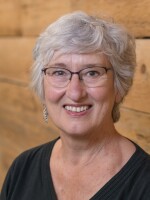During a recent Vermont Symphony orchestra concert, I found myself counting bow ties in an effort to assess whether or not there was equal representation of each gender on stage - and that made me curious about the overall progress of women in the professional world of classical music in general.
I’ve discovered that in American orchestras at least, the news is pretty good. In our top 24 professional orchestras, women now constitute about 36%. That may in part be due to the practice of what’s called “blind” auditions, where musicians - at least initially - play behind a screen. In a bizarre twist, female musicians who have success in this method have advised other women to wear gender-neutral footwear – like hiking boots - or go barefoot. But after spending years at a conservatory, that must feel pretty silly. Just imagine Joshua Bell with a colorful pedicure!
In major European orchestras, however, the news remains grim for female players. When clarinetist Sabine Meyer was hired by Herbert von Karajan to join the clarinet section of the Berlin Philharmonic in 1982, she endured outrageous junior-high behavior as colleagues moved their chairs away from her during rehearsal, and voted 73 to 4 not to offer her a contract. She left the orchestra 9 months later – and Maestro von Karijan left soon after that. Now the Berlin ratio is a pitiful 87 to 13 percent.
The Vienna Philharmonic also resists hiring women - or non-Europeans, for that matter - claiming that they represent Viennese culture; their scorecard of 99% only makes room for a harpist or two - makes me wonder what century we’re in.
The case for women conductors is still not good either. I remember as a preteen twirling around in front of the TV during Leonard Bernstein’s Young People’s concerts, imagining conducting Beethoven, and being humiliated when my older brother Dave laughed and said that girls can’t be conductors. And yet, when I joined the VSO chorus years later, the orchestra conductor was the amazing Kate Tamarkin.
Marin Alsop became the first female conductor of a major orchestra in 2005 in Baltimore, amid some controversy. She too had been inspired by Bernstein but had been told by her teacher at Julliard that “girls don’t do that.” Fortunately, her mother gave her a baton the next day. That same year Simone Young, a specialist in Bruckner and Wagner, became the first woman to conduct the Vienna Philharmonic.
Then there are the composers. In March, we may hear a Fanny Mendelssohn or Amy Beach, or if we’re daring, a Joan Tower, but that’s about it.
Recently, I was talking to a young woman who composes and plays bass with the Vermont Youth Orchestra. She seemed completely unaware that that this instrument is an unusual choice for a girl.
It gave me hope that eventually future generations may not need a women’s history month - or even remember the struggles of musicians like Sabine Meyer as they insist on making their way in the world.





